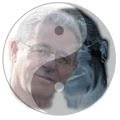Great article on the triumph of content over form. Thanks to George Dearing for pointing it out.
Dylan Tweney
- An award-winning writer specializing in technology, science and business, Dylan Tweney is a senior editor at Wired.com and publisher of tinywords, the world's smallest magazine.
The Undesigned Web
nts and political parties communicated to the first mass audiences.
Message and presentation were inextricably intertwined, with the latter lending power, impact and even meaning to
Design reigned supreme in the 20th century, when it was an integral part of the way artists, publishers, governments and political parties communicated to the first mass audiences.
Message and presentation were inextricably intertwined, with the latter lending power, impact and even meaning to the former. Not for nothing was Marshall McLuhan able to say, with gnomic brevity but not a little insight, "the medium is the message."
But in the 21st century, Internet standards have successfully separated design and content. The two live more interdependent lives, sometimes tightly tied and sometimes completely separated from one another.
The message is now free from the medium.
It's that separability of design and text that has led to the third wave of the web, in which readers (or what some would call end-users) are in control of how the content they are reading looks. And, as it turns out, many of those readers like their designs to be as minimal as possible.
As Jaron Lanier perceptively observed in the introduction to his recent book, You Are Not a Gadget many -- if not most -- of the readers of any text in the 21st century are not people. They are machines: Google's web crawlers and indexing engines, for instance.
Even humans have different motivations and needs. Sometimes readers will want to engage with a particular story in the calm, uncluttered space an iPad affords, with no distractions and with the content front and center. Other times, they may want to read things -- as we increasingly do -- in the midst of a busy hub of data. That should be the reader's choice, not the publisher's. To facilitate those decisions, as well as the widespread distribution of content via Twitter, Facebook, Tumblr, Flipboard and a hundred other tools used by readers today, publishers need good information design as well as clean visual designs.
The Undesigned Web will facilitate critical thinking, sharing of information, and the wider dissemination of knowledge than has ever been previously possible. That's because it will be easier than ever to separate content from the, ahem, bullshit with which it is frequently cloaked: Distracting photo spreads, advertisements, backgrounds, faux-official layouts and logos, and the like. It will be easier to tweet, retweet, blog and reblog content, adding layers upon layers of discussion and criticism while embedding it into new social contexts.
In this new world, the end of design -- by which I mean its purpose, its goal, the end toward which it aims -- is to make content easier to parse, both for humans and for machines.
Read more at www.theatlantic.com





